#American vs. Japanese traditions
Explore tagged Tumblr posts
Text
“Lunch time antics pt 3”
Enid: this is so good
Yoko: the best. Although they could use a bit of sugar to make it a true Japanese egg sando
Enid: Wednesday can we get some Kewpie mayo so you can make these? Not that I don’t love your egg salad
Wednesday: sure. I can order some
Yoko: oh! Let me send you a link to where you will get real Japanese mayo. American version uses yeast extract and added sugar vs MSG
Ajax: seriously. Why does American foods always have so much or add sugar?
Yoko: or not use real sugar?
Xavier: you know MSG is bad for you right? Wednesday. Please don’t consume this? I don’t want you to die
Wednesday: Xavier. I consume ant larvae, ants, crickets and scorching hot peppers. MSG is not going to kill me. Besides it is also found naturally in tomatoes, mushrooms and those grapes you are shoveling into your mouth
Divina arrived
Divina: the line went faster than I thought! -she placed the prized sandwich in front of her brother- and yes. I got the last one
Kent: what do I owe you?
Divina: next time we’re out? You owe me food
Kent: thanks
Xavier: that’s disgusting, Wednesday! You’re saying that just to make me sick!
Bianca: she is not. One of the memories I have with my father was a trip we took to Oaxaca, Mexico. We tried the chapulines. They were quite tasty. My mother refused. Fried grasshoppers
Wednesday: i do not like grasshoppers. My father taught Lurch his family recipe using crickets
Xavier: the two of you are now ganging up with me.
Ajax: Patsas is a traditional Greek soup employs lamb, sheep, or pork tripe as key ingredients. Tripe being stomach lining
Wednesday: have you ever had menudo?
Xavier: I love menudo! We have a Mexican neighbor that makes it and brings us some! It always smells so good when she’s cooking! Menudo is the good stuff!
Wednesday: it’s traditionally made with cow tripe or cow’s stomach
Enid: I love menudo! There’s a Mexican restaurant that we go to that serves a lot of traditional Mexican dishes! They serve the Chapulines as well as escamole when it’s in season. I’ve never had the courage to try them
Wednesday: you have tried my crickets. If you are ever at my house during Spring we always have escamole
Enid: maybe this spring?
Wednesday: I will probably staying here.
Enid: oh yeah. The production
#wednesday addams#enid sinclair#enid x wednesday#wenclair#wednsday addams#enid and wednesday#wednesday x enid#wenclair au#xavier thorpe#bianca barclay#yoko tanaka#divina wednesday#kent wednesday#eugene ottinger
46 notes
·
View notes
Text
youtube
Capcom Fighting Collection 2 - Announce Trailer
Capcom Fighting Collection 2 will launch for PlayStation 4, Nintendo Switch, and PC (Steam) in 2025.
The list of included titles is as follows:
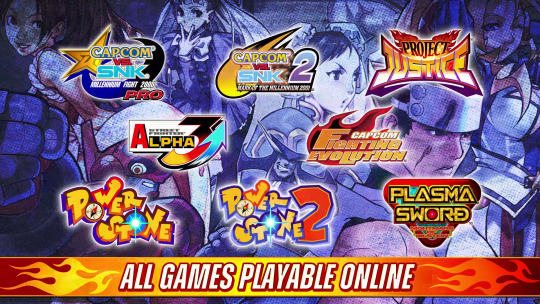
Capcom vs. SNK: Millennium Fight 2000 Pro
Capcom vs. SNK 2: Mark of the Millennium 2001
Capcom Fighting Evolution
Street Fighter Alpha 3 UPPER
Project Justice
Power Stone
Power Stone 2
Plasma Sword: Nightmare of Bilstein
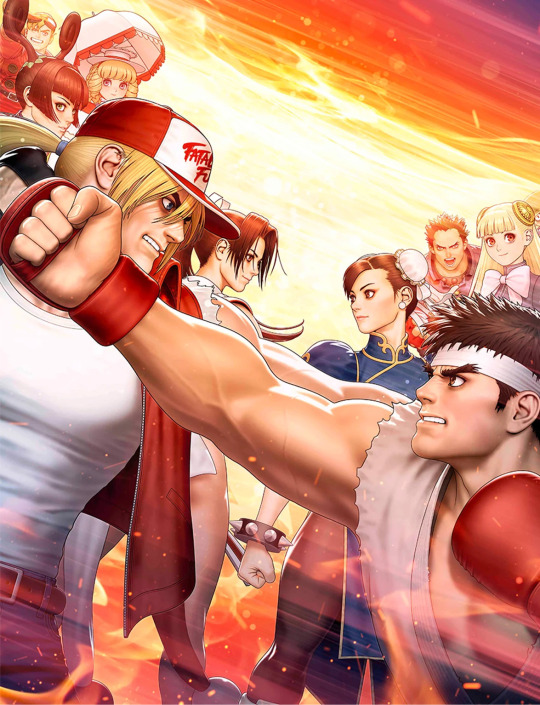
Key visual for illustrated by Shinkiro

Title logo




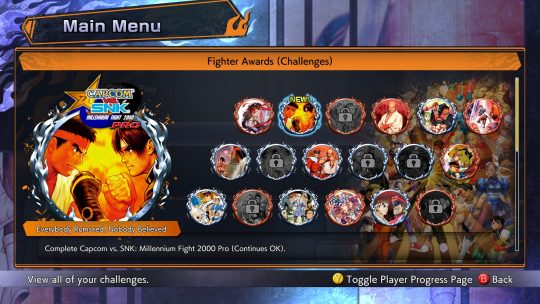








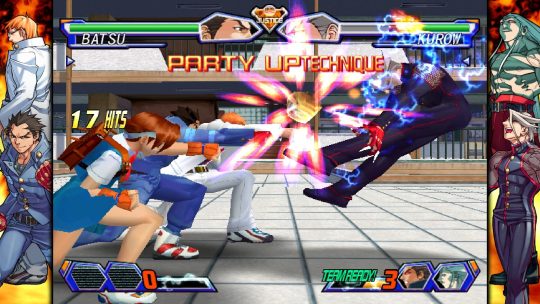

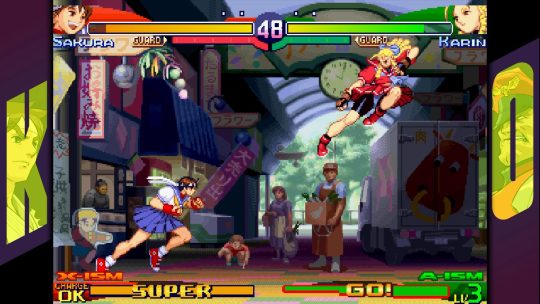

Screenshots
Overview
About
Combining hard-hitting classics like Capcom vs. SNK 2: Mark of the Millennium 2001 with fan favorite brawlers like Power Stone 2 in one knockout package, Capcom Fighting Collection 2 comes chock-full of new features including online play and quality-of-life updates across all eight games!
Capcom Fighting Collection 2 is a lights-out collection of fighting games and fun-filled classics hitting modern platforms for the first time, including:
Capcom vs. SNK: Millennium Fight 2000 Pro
Capcom vs. SNK 2: Mark of the Millennium 2001
Capcom Fighting Evolution
Street Fighter Alpha 3 UPPER
Project Justice
Power Stone
Power Stone 2
Plasma Sword: Nightmare of Bilstein
Key Features
Face Off with Friends Online – Online play is available across all eight titles, featuring rollback netcode for a strong and stable online experience!
Hit the Training Bag – Training Mode is now available across all titles with tons of customizable options!
Expanded Language Support! – 14 languages will be supported including English, Latin American Spanish, Brazilian Portuguese, Japanese, French, Italian, German, Castilian Spanish, Russian, Polish, Korean, Simplified Chinese, Traditional Chinese, and Arabic!
A Museum’s Worth of Content – Explore art and music galleries with official art, concept art, design documents, and more never-before-seen content.
Customize Your Experience – Fine-tune specific features of your gameplay experience via EX Settings specialized to each game, various Display Filters, button customization, and more.
Need a Snack Break? – Mid-game saves have now been added!
Additional Updates – Various gameplay balance adjustments and quality of life improvements across all eight games.
#Capcom Fighting Collection 2#Capcom Fighting Collection#Capcom Versus#Capcom vs. SNK#Capcom vs. SNK 1#Capcom vs. SNK 2#CvS1#CvS2#Capcom Fighting Evolution#Street Fighter#Street Fighter Alpha#SFA#Street Fighter Alpha 3#SFA3#Project Justice#Power Stone#Power Stone 1#Power Stone 2#Plasma Sword Nightmare of Bilstein#Plasma Sword#Star Gladiator#Capcom#video game#PS4#Nintendo Switch#PC#Steam#long post#Nintendo Direct#Nintendo Direct August 2024
21 notes
·
View notes
Note
Do you think Miura regretted adding the Casca eclipse scene? For him to even say that he thought Casca enjoyed it? That scene is what made Griffith the most hateable character in animanga community. It's kinda sad that most readers just reduced Griffith as someone who is evil from the beginning. It removes every nuance from his character. But I guess it makes sense if Miura intented to make Griffith irredeemable after the eclipse. It's definitely the most impactful scene
It wouldn't surprise me if he regretted it to some extent - I don't have a source offhand but I believe he's mentioned that he regretted how dark the Eclipse was, without specifying what aspects. It just could be killing off almost every character lol, but yeah that could be part of it. And the story has been a lot less rapey for a long time now, and less (though not none ofc) gratuitously fanservicey, which could also indicate that if he wrote the Golden Age at the same point in his life he was writing the Fantasia arc eg, it might be toned down in terms of sexual violence.
But who knows? He might've still considered it essential to the characters and story. I'd like to think that at least the depiction would be different, less eroticized and more focused on Casca.
And to be fair to Miura's choices wrt the Eclipse and storytelling, from what I've heard it's mostly American/English speaking audiences who hate Griffith so much they can't comprehend the story lol. The audience he was presumably writing for, Japanese fans, still tend to view him with more nuance and sympathy. So I think it probably fits better within Japanese media tropes than Hollywood tropes, at least at the time it was written.
(This isn't to say Hollywood was more enlightened about rape or misogyny or anything like that in the 90s, it could be any number of reasons, like Hollywood's Hays code history making for a long tradition of very black and white hero vs villain stories.)
15 notes
·
View notes
Note
kinda inspired by that response u did to someone else's post. but like. it just reminded me of how different Americans see nationality/ethnicity/race to other people, and how it can come through in the things they write.. like especially fanfiction. like how everyone who isn't a white American (and sometimes even those that are) can just become stereotypes. nicky is repeatedly a victim of this, ive read so many fics that just 'exaggerate' the fact that he's Mexican, even though it makes no sense! nicky has lived in America and Germany his whole life, his dad's a racist and his mum barely speaks to him, he'd be almost completely disconnected from Mexican culture realistically, and u can kinda see that in the books. but in fics, they make him like only eat stereotypical Mexican food, speak Spanish, listen to music in Spanish... like it's nuts. they do it to riko too except he becomes the Japanese mafia racial stereotype instead. Jean suddenly being obsessed with all things French, ranting about baguettes, even though canonically he has no good memories of France and seemingly wants nothing to do with the country or culture. it drives me crazy. like. even with neil 😭 he's canonically white and American, lived in America his whole life, but suddenly a British mother means he has a strong British accent and complains about how people make tea.
am I crazy?? its like almost comical levels of stereotyping, you'd think they'd be doing it for a bit, and that post just kinda reminded me of it.
the neil vs Jean British vs French thing is crazy too. I've never heard a British and French person argue over their countries under the age of like 60. but in so many fics, usually raven neil fics, its all they wanna talk about. wtf!!
everybody who could be classed as even slightly not "100% American" suddenly becomes a stereotype. and yknow the thing that rlly gets me? the accents are always exaggerated and always mentioned. nicky has a strong Mexican accent, neil has a strong British accent, and so on... but the "100% American" characters can be from varying parts of America with widely different accents (and cultures), but you'd never know it because the writer never mentions them even having an accent. it's just so blatant and shameless, and they don't even seem to realise they're doing it. they'll have other Americans in the comments being like "I love your British neil 🥰🥺" that is not neil. that is a stereotype.
even the books themselves to a lesser extent do this... like I'm pretty sure Jean having a French accent is mentioned. which isn't bad in and of itself, but a lot of the foxes are from different parts of America but again no accent differences ever mentioned. :/

all of this in every fucking fandom just for the record the og post we talked about was written by non American but it's just .. fandom think that is repeated by people as stupid fucking joke like yes it is very normal for immigrants to move to different country and still care and cultivate their traditions but then you look at how fandom represent it and like ... the rest of the world sees you and thinks you are fucking weird for handling it this way ✌️✌️✌️
13 notes
·
View notes
Photo
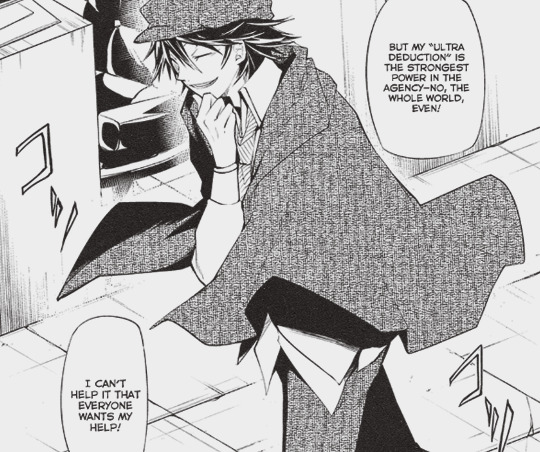
BSD VS. LITERATURE: MURDER ON D STREET
The third entry in my long-running series analyzes every literature reference in Bungou Stray Dogs and tries to piece together the author’s intention in referencing the work.
Ranpo’s the only character whose ability name does not reference a specific book, but his entire character seems to be a reference to Ranpo Edogawa’s collection of mystery novels and his life’s work in general. However, the first chapter to feature him is named after his first story facing his primary detective Kogoro Akechi. Let’s root out the references underneath the cut.
1. Poe and Ranpo
Ranpo the character is not just a reference to the original author’s work, he’s a tribute to the mystery genre and detective fiction in general.
Ranpo is an incredibly prolific mystery author in Japan. He is credited as one of the biggest influencers in the Japanese mystery tradition. He was an admirer of western mystery novels, especially Edgar Allan Poe, and tried to make his own more Japanese-inspired tradition of mystery novels.
“His chosen name, in combination with his frequent allusions to works on crime and detective by mostly Western authors, demands that the reader or critic compare Rampo’s work with that of the famous western writers he references and consider them all as belonging to the same category. Ranpo believed that a Japanese detective story could match the work of Western authors in the modern ratiocinative tradition they had established. Some of his works bear directly on the debates surrounding the issue, such as “The Case of the Murder on D. Hill” itself which Rampo intended as a response to critics who argued it was impossible to set the secret incidents and mysterious dealings which formed the core of the modern WEstern mystery in the open, wood-and-paper houses of Japan and that it was thus a natural result of the Japanese way of life that Japan should produce no strong mystery tradition of its own.”
Edogawa Ranpo - The Early Cases of Akechi Kogoro Introduction
Ranpo set out to write Japanese mystery stories written in a Japanese way, so eastern authors could establish their own traditions. In the same way, Ranpo in Bungou Stray Dogs is always interacting with other characters inspired by Mystery Authors, Edgar Allan Poe himself, and Mushitarou Oguri another Japanese crime novelist who was western inspired (He was known as the Japanese John Dickson Carr). Yokomizo was named after Seishi Yokomizo. His pen named Kindaichi is named after his private detective character “Kosuke Kindaichi.” In the same way that Ranpo was dedicated to helping Japan create its own mystery tradition, Ranpo himself is someone who gathers other detectives around him and befriends them.
The relationship between Edgar Allan Poe and Ranpo in BSD itself is also a pretty heavy reference to the influence both share in their respective genres. Edgar Allan Poe is largely credited as being the first mystery author and “Murders in the Rue Morgue” as the first modern detective story. In the same way that Edgar Allan Poe invented mystery novels and inspired Ranpo, Ranpo then went on to inspire mystery novels in the east and be formative for the Japanese mystery tradition.
2. Murder on D Street / The Case of the Murder on D. Hill
There are several references to Kogoro Akechi’s first case in the first real mystery to feature Ranpo in the manga. The first and most obvious is the title itself. However, the fact that the murder takes place when a corpse is discovered in a river is a reference to Ranpo’s chosen pen name. "Edogawa” which Ranpo chose as a pen name uses the characters for the Edo river which borders present-day Tokyo to the south and was originally the lower course of the Tone River.
His pseudonym incorporates the geography of Edo, the old capital of the isolationist Tokugawa Shogunate, with the name of Poe, an American writer. This contradictory composition reflects Rampo’s own efforts to create a uniquely Japanese tradition of an imported genre.
Edogawa Ranpo - The Early Cases of Akechi Kogoro Introduction
In D. Hill, the murder itself is a bit of a parody of more western mystery novels. Most of the deduction takes place when Akeichi and his friend the narrator are discussing the details of a particular case that appears to be a locked room. At first, the narrator makes a solid deduction in the way a Sherlock Holmes or Western detective would immediately jump to the conclusion of a case based on connecting a large amount of small evidence noticed at the crime scene.
The two characters themselves are also avid mystery readers and make references to several other mystery novels.
“I know you’ve read Poe’s the murders in the Rue Morgue ad Leroux’s The Mystery in the Yellow Room, and I’m sure you know that Rose Delacourt Case in Paris. Even now, a hundred years alter, there are still mysteries surrounding that curious murder case. I’m recalling it now. Isn’t the way the perpetrator of tonight’s incident departed without leaving a trace somewhat similiar?” said Akechi.
The Case of the Murder on D. Hill
This was Poe’s first real attempt to create a locked room in a traditional Japanese paper wall and sliding door room. Poe even draws attention to that fact.
“It’s often been said that the kind of serious crime you find in a western novel could never happen in a Japanese building, but I certainly don’t think so, because of incidents such as this one. Somehow or other, although I don’t know if I can, I feel that I’d like to try my hand at solving a real case, just once.”
The Case of the Murder on D. Hill
The narrator goes through the process of deduction and comes up with a likely-sounding theory, that’s just like the kind of clever solutions in one of those novels. However, he comes to the wrong conclusion because he was thinking in mystery novel logic and Akechi goes out of his way to correct him.
The Murder on D Street chapter in BSD is structured in the same way, at first there’s an obvious culprit to the crime only for Ranpo to reveal that the culprit framed it as the mafia and there was another story behind it. In both cases too, the murder victim was killed by accident by her own lover.
In a way, Ranpo in his work goes out of the way to both parody and comment on the western genre of mystery novels themselves. Akechi even highlights that some of the guesses that characters leap to in those novels are ridiculous.
“For example, concerning my relationship with that woman, have you made a thorough and psychological investigation inot what sort of childhood friends we were? Whether or not there had been a past love affair between us in the past/ Whether or not I bore a grudge against her? Those aren’t the story of things you can guess at, are they...?”
The Case of the Murder on D. Hill
Akechi points out that rather than solving mysteries by jumping to conclusions based on evidence he tends to solve people psychologically.
“My methods are a bit different from yours. Physical evidence and things of that kind can take all sorts of appearances depending on the point of view. The best method of detection is psychological: to see through the depths of people’s heart.”
The Case of the Murder on D. Hill
Perhaps about this, Ranpo the character is a genius who can puzzle together the culprit of a murder with just a few pieces of evidence. At the same time, he is completely unable to understand psychologically the way people around him think.
“I don’t understand what anyone’s thinking! I’m scared! It feels like I’m surrounded by monsters! It doesn’t matter what I say - nobody understands me! My parents were the only ones who did, and they’re dead!” BSD. VOL 3
Edogawa Ranpo the author also created a mystery series for children known as the “Boy Detectives Club”. Yoshio Kobayashi, the assistant of Kosuke Kindaichi starts a detective club of his own right by gathering other children from his own school. In the third light novel, Ranpo’s father is a reference to Akechi Kogoro himself.
The man was a legendary detective. The “Headless Officer” case, the “Moonlight Phantom,” the “Cow Head Incident” - he helped solve several difficult cases that shook the nation.
If his father was Kosuke Kindaichi, then naturally Ranpo himself would be a reference to Kobayashi the boy detective. Which also fits his role of gathering all the other detective characters and forming connections between them. He also gained fame for being a young genius detective, and it’s also how he gained his home and his place with Fukuzawa and the detective agency.
Ranpo is also, much like the author himself a character who does not have a power like the rest of the ability users, trying to still create a name for himself. Ranpo Edogawa was an inspired and talented enough author to basically rewrite the japanese mystery tradition into something more unique. Whereas, Ranpo the character despite having no ability of his own is the most important character in the agency fights on the front line with everyone else. The same way Ranpo influenced the entire mystery genre in Japan, Ranpo the character also is the main reason the detective agency was created and the reason they all stay together.
Which speaks a lot of the importance of both the author and the character.
#edogawa ranpo#bsd meta#edgar allen poe#edogawa ranpo bsd#edgar allen poe bsd#seishi yokomizo#mushitaro oguri#mushitaro oguri bsd#bungou stray dogs meta#bungou stray dogs
156 notes
·
View notes
Note
Interesting thing from a YouTube video a I watched on bad dad's in anime
YouTuber: Could this comparative lack in a good father figures be because a number of people who went into the anime industry or became Mangaka were raised in traditionalist homes who didn't want them to pursue art and so butted heads with their own fathers who wished for them to be something more traditional like a Salaryman or doctor? Mabey
I mean I will refrain because I have only a tenuous weeb-era grasp on the intricacies of Japanese culture
But also I was making the same discussion on why a lot of american shows have been depicting the Heaven/Hell dynamic as 'sinners aren't all evil they've just been handed a bad card but Heaven is a corrupt and hypocritical government dictating the law on what is considered 'sin'' vs. the way America is at the moment.
11 notes
·
View notes
Note
Isn't something like that canon for nyo japan? although admittedly it doesn't make as much sense
yeah, it doesn't make as much sense for nyo!japan, haha. Kiku not having long hair in canon before the meiji-era feels like a missed opportunity precisely because for Japan (and China), the politicisation of short hair with modernisation, westernisation and "civilisation" in the 19th century (or: from the point of view of their opponents, a rather disgraceful break from important traditional values)—was centred on men's hairstyles, rather than women's. after all, it was still the norm for western women to have long hair in the 1850s. short women's hair as a statement emerges as a global trend more in the 1920s—and Japanese women adopted those styles too (as these photos show).

for men, short hair wasn't really regarded as appropriate in japan or china before the modern era. there were some exceptions, like shaving your head bald to enter a religious order. but otherwise from what i know, forcibly having your hair cut could be a punishment, precisely because the norm is long and pulled back into a bun/topknot, or the Manchu-style braid/queue in Qing China (which was its own controversy because the Qing rulers were ethnically Manchu, and the queue was seen as a foreign imposition on Han Chinese culture). Nonetheless, overall trend = long hair for men.
helltalia-wise, i headcanon that both Kiku and Yao had dramatic haircuts, though Kiku did it first (by 1867, when the Meiji emperor ascended the throne)— in line with how his long-term, pretty intimate relationship with Jan/Johan (Ned) and his exposure to Dutch studies pre-disposed him to being more willing to adopt western styles faster than Yao. after all, Kiku's no stranger to borrowing from others. i like the visual break from tradition and change in worldview this represents, especially since Kiku was not only heavily influenced by Yao for more than 1000 years before (the kimono itself was adopted from the traditional chinese hanfu), but because long hair for men also connoted "civilisation" through the chinese imperial worldview. for example, when china was conquering and colonising what is now southern china, the baiyue tribes who lived there were perceived as 'barbarians', and chinese writers back then noted their short hair as a point of distinction.
so, Kiku cutting his hair short is both about reinventing himself, but also inherently embedded with a symbolic turning away from Yao in some ways (as @hetagrammy and @acemapleeh also observed with some solid tag comments about Confucianism, the mentor-protege dynamic these two had vs. the pull of westernisation). it's like, Yao and Kiku have been at war with each other before the Westerners showed up (it involves Yong Soo, Yao kicking Kiku's ass and being very 'remember your place, upstart'), but to me, what still felt constant even during such periods of antagonism is that it's implicitly taken for granted that China was THE powerful empire, and that Yao's cultural traditions connoted power and prestige—in a manner similar to the sort of image Europeans had of Rome and Greece. so i really like the visual of Kiku's Dramatic Haircut, especially since one reason Japan eventually caved to the Americans' demands during the Perry Expedition was that they'd already heard from the Dutch what happened to China during the Opium Wars.
76 notes
·
View notes
Text
For those who read widely and take an interest in Asia — likely readers of this article — chances are they will have picked up a book put out by Tuttle Publishing at one time or another.
History of Tuttle Publishing
While the Tuttle family business can be traced back to 1832, making it one of the oldest American publishers still in operation, according to the company, the Japan presence was established in 1948 when Charles Tuttle, noticed a gap in the market.
Initially arriving in Japan to work in the newspaper industry as part of the American Occupation, Tuttle later began importing American books for U.S. troops stationed in the country, and ferrying Japanese books back to the United States for interested readers.
He later opened what was reportedly Tokyo's first English-language bookstore, before publishing thousands of Asia-focused books himself. Before his death, Tuttle was awarded the Order of the Sacred Treasure by Emperor Showa for his work.
Tuttle Publishing and Japan
Tuttle’s longtime presence in the market means it has an extensive back catalog that is now in high demand, fueled by the current boom in interest in Japanese culture. As interest in Japanese authors has grown, so has demand for Tuttle's early print editions.
“Because they’re hard to get hold of ... they can go for silly prices sometimes, because people collect them or tourists want Japanese literature,” he said. Tourists in particular go straight for them, as they’re hungry for Japanese stories to take home as souvenirs.
Prints vs Digital and AI
Despite people long decrying the death of print or the end of books, the publishing industry is growing stronger. During the pandemic in 2020, Tuttle saw a surge in book sales, and while this has subsided somewhat, “book sales are now higher than before the pandemic.”
Personally, although reading digitally on tablets is much more convenient and save space on bookshelf, the feeling of holding something physical, the smell of books and the sense of detachment from the world in going offline is something that readers love.
Below are 10 books that I have read from Tuttle Publishing that I would recommend those who are interested in Japanese culture.
A Brief History of Japan
The perfect book to understand Japan's history as it sums up everything concisely, not too brief and not too detailed.
A History of Japan in Manga
If you're not into reading books full of texts and more of a visual reader, then this one is for you as it's explained with manga.
The Heikei Story
The defining moment in history where the warrior class Samurai began to rise to its prominence to overthrow the Imperials.
Hiroshige's Japan
Join a French artist as he explores the old Tokaido Road that once connected Edo (Tokyo) and Kyoto as he shares his illustrations.
Japan Journeys
A collection of woodblock printing art which journals the travelers experience in Edo Period moving from one prefecture to the other.
My Travels in Japan
A cute travel diary which accounts her travel experience in modern Japan which consists of illustrations of places she visited.
Japan in 100 Words
Everything you need to know about Japan, from its culture, tradition, philosophy, food and pop culture, categorised into 100 sections.
Samurai Castles
History and design of the architecture of the iconic castles, which shows the uniqueness of each castle with photos and drawings.
Manga Yokai Stories
The short stories of Yokai and how they came to be, which are meant to demonstrate the humanity and tragedy of life.
Lady Murasaki's Tale of Genji
A story written by a Heian woman who envisions her version of an ideal man and depicts the life in the Imperial court of her time.
#tuttle publishing#japanese books#japan#book recommendations#japanese culture#japanese history#japan times#manga#japan travel#japanese art
15 notes
·
View notes
Text
Kaiju Week in Review (June 18-24, 2023)
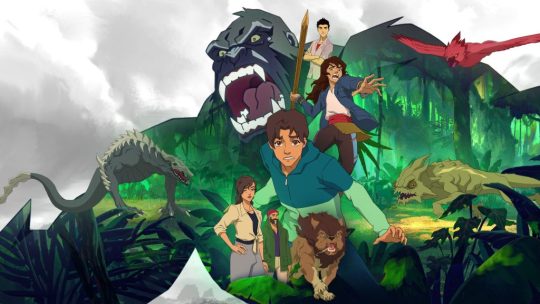
The big news of the week, of course, was Netflix finally releasing Skull Island, the first new Monsterverse story in over two years. It's a surprisingly standalone piece, with no Monarch and minimal references to Kong: Skull Island, and going off his Twitter, creator Brian Duffield largely prefers to let the work speak for itself. I have quibbles with some of the creature designs—not enough florafauna!—and the characters can be too flippant about their life-threatening circumstances, but overall I had a good time. Annie's a great character—think Saeko from Son of Godzilla as a bloodthirsty teenager—and the obligatory Titan nemesis is a cut above most of the Monsterverse's original creatures.
As for its future, Season 2 is already written and recorded, but won't happen unless Netflix sees big enough viewing numbers for Season 1. I'm frustrated by that, especially given how many loose ends the season finale had, but it's pretty typical stuff from the company.

Dismal news about the American Shin Ultraman Blu-ray/DVD from Cleopatra Entertainment: they didn't bother to include translations for the ample on-screen Japanese text. That was enough for me to cancel my preorder; I tend to be pretty tolerant of the various unforced errors by the companies releasing this stuff, but that level of laziness (the translations already exist!) just renders the discs pointless in my eyes.
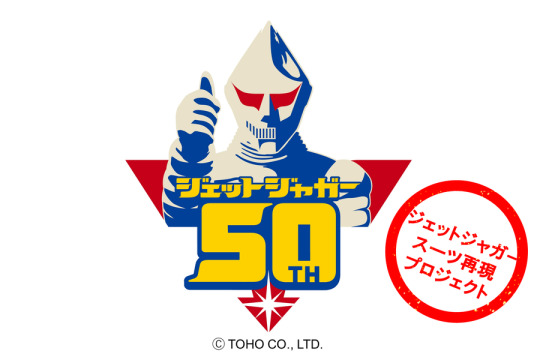
Toho is crowdfunding another Showa suit replica for a character's 50th anniversary this year... Jet Jaguar! If successful (or semi-successful, like last year's Gigan campaign), it'll feature in a new short film to premiere on November 3, as has been tradition since 2020. Interesting that they went for Jet Jaguar over Megalon; I suppose he'd be cheaper to produce, and the largest film studio in Japan seems hellbent on hamstringing these wonderful little shorts.

Godzilla: Here There Be Dragons #1 is out. Hard to judge it so far as it's mostly setup.

In other news related to Godzilla vs. Megalon's 50th, Bandai will release a Movie Monster Series figure of the 1973 Godzilla (MegaroGoji) on July 28 as a Godzilla Store exclusive. Pretty big news, as they've only released figures of the tweaked '74 and '75 suits previously, and those were back in 2003 and 2004, respectively. NECA didn't get to this one either.
#kaiju week in review#godzilla vs. megalon#godzilla#jet jaguar#skull island#king kong#godzilla here there be monsters#shin ultraman
43 notes
·
View notes
Text
Capcom Fighting Collection 2 announced for PS4, Switch, and PC - Gematsu

Capcom has announced classic fighting games collection Capcom Fighting Collection 2 for PlayStation 4, Switch, and PC (Steam). It will launch in 2025.
Here is an overview of the collection, via Capcom:
About
Combining hard-hitting classics like Capcom vs. SNK 2: Mark of the Millennium 2001 with fan favorite brawlers like Power Stone 2 in one knockout package, Capcom Fighting Collection 2 comes chock-full of new features including online play and quality-of-life updates across all eight games! Capcom Fighting Collection 2 is a lights-out collection of fighting games and fun-filled classics hitting modern platforms for the first time, including:
Capcom vs. SNK: Millennium Fight 2000 Pro
Capcom vs. SNK 2: Mark of the Millennium 2001
Capcom Fighting Evolution
Street Fighter Alpha 3 UPPER
Project Justice
Power Stone
Power Stone 2
Plasma Sword: Nightmare of Bilstein
Key Features
Face Off with Friends Online – Online play is available across all eight titles, featuring rollback netcode for a strong and stable online experience!
Hit the Training Bag – Training Mode is now available across all titles with tons of customizable options!
Expanded Language Support! – 14 languages will be supported including English, Latin American Spanish, Brazilian Portuguese, Japanese, French, Italian, German, Castilian Spanish, Russian, Polish, Korean, Simplified Chinese, Traditional Chinese, and Arabic!
A Museum’s Worth of Content – Explore art and music galleries with official art, concept art, design documents, and more never-before-seen content.
Customize Your Experience – Fine-tune specific features of your gameplay experience via EX Settings specialized to each game, various Display Filters, button customization, and more.
Need a Snack Break? – Mid-game saves have now been added!
Additional Updates – Various gameplay balance adjustments and quality of life improvements across all eight games.
Watch the announcement trailer below. View the first screenshots at the gallery.
Announce Trailer
English
youtube
Japanese
youtube
#Capcom Fighting Collection 2#Capcom vs. SNK#Capcom Fighting Evolution#Street Fighter#Project Justice#Power Stone#Plasma Sword: Nightmare of Bilstein#Capcom#Gematsu#Heck yeah Power Stone ~#Youtube
3 notes
·
View notes
Text
BLOGTOBER 10/22/2024: THE GRUDGE (2020)
I had no idea that this movie even existed when I stumbled upon it one night and figured it would be an OK waste of time. The film's invisibility is explained by the fact that it was released right at the beginning of 2020, which was a lousy time to do anything, but that doesn't clarify for me why everyone hated it so much. I have a few theories, the main one of which is GRUDGE burnout. Various factors make it hard to describe how many GRUDGE movies there actually are, but let's generously say there are 7 original Japanese features, 2 Japanese reboot films, the SADAKO VS. KAYAKO movie, then there are 3 American remakes and this reboot. The present film is the only one I like.

I was a total sucker for J Horror when it hit the states, but even at the height of my mania, I didn't get anything in the extended JU-ON franchise. None of them have the depth or convincing dread of RINGU or KAIRO or any of the other allegories for festering trauma and alienation. They all just seem extremely silly to me; oooh, a spooky cat, oooh, a spooky child. Every time the ghosts start making that noise, it's almost impossible for me to stop myself from also making the noise. It's a noise you learn to make as a little kid to be annoying. It makes me think of this every time:
youtube
The 2020 version, on the other hand, really works for me. Not that it's never silly, but considering that it's built on a foundation that is so fundamentally ridiculous, it's pretty accomplished. It's intensely atmospheric, effectively scary, and it has an absolutely stacked cast; with all that in mind, I find the de rigueur silliness pretty forgivable.
Andrea Riseborough (yesss) is a recently widowed cop whose first case in a new town involves a string of seemingly-unrelated deaths tied to a certain house. As per GRUDGE tradition, the asynchronous story unfolds over three years, during which: - A grudge-infected woman returns from Japan to kill her family and herself in the house. - A pair of husband-wife realtors, who are expecting a potentially-severely disabled child, contract the grudge as they try to sell the house, resulting in a murder-suicide. - An aging couple moves in, and they temporarily host a woman who performs assisted suicides, hoping she will help the wife, who suffers from advanced dementia. Soon, they all start to see the angry spirits of the first family.

I really enjoy the way that this story is layered, with a character who recently experienced a death; a couple who are seeking death (Lin Shaye and Frankie Faison); and a couple who struggle to decide whether their baby will live or die (Betty Gilpin and John Cho). It's a lot to pack into a 94-minute movie, but the cast is so strong, and the atmosphere is so well-developed that nothing feels half-baked. I especially enjoy Jacki Weaver (of PICNIC AT HANGING ROCK among many other things) as the assisted suicide professional who brings a touch of Tangina to her segment, without going over the top. This is certainly Lin Shaye's finest moment; I've always been a fan, but in this role she balances tragedy and terror very successfully. She's someone who has that Robert Englund quality where she just really knows how to be in front of the camera, she knows what her angles are and has an excellent sense of timing, but here she also gets to do a bit of proper drama. It's nice.
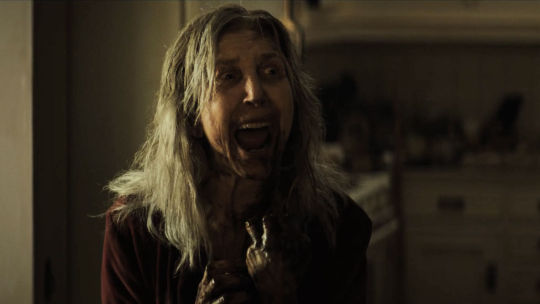
All that aside, I just find this movie really appealing materially. It has a couple of the best movie corpses I've ever seen, and it has an interesting way of presenting haunted houses. One of the few things that I like about the other GRUDGE movies is how they tackle the challenge of making a new, cheaply constructed house look scary. The big old Victorian that the movie centralizes is an easy one, but Andrea Riseborough's suburban ranch-style place is a less obvious candidate, and they still manage to spookify it pretty well. I used to think about what makes a new building disturbing when I would see images of Jeffrey Dahmer's parents' place, which was so ordinary in most ways, though it was also shoved back into the shadows of the trees...I always wondered whether I was just projecting that it looked sort of grim. I also think about my in-laws' suburban home, which I don't personally find spooky--perhaps due to comfort and familiarity--but it crazily doesn't get any light at all, from any angle. It's perpetually cold inside because of this, and I always ask myself if I would find the place frightening if I were a stranger there.
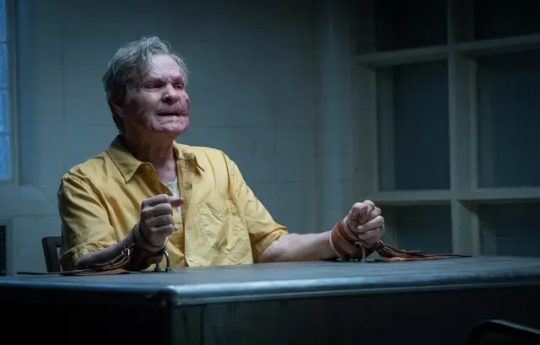
William Sadler FTW!!!
Anyway, that's enough about me. I can pick out things about this movie that don't work as well (like I find Demian Bichir deeply ridiculous although I don't exactly blame him, I think it's just the way he is), but I don't find that the problems stand out farther than the virtues, and I think that makes this a success. I did browse through some of the negative reviews just to see what I might be missing, and I found that the vast majority of them said things that I just didn't think were true; I think it's objectively not true that the performances are shallow, I think it's objectively not true that it's overly predictable and cliched. I think that sometimes people preemptively tell themselves what a movie will probably be like--especially horror movies, and most especially an American reboot of a remake of a Japanese horror movie--and then when they see the movie, they only see what they told themselves they would. Of course I can't prove that that's what happened, it's just what I think, because almost no negative review made me feel like we had even seen the same thing. I'm here to tell you not to be afraid of THE GRUDGE (2020). Go ahead and see what you think, without all the baggage. If you really don't like it, it can be my fault.
#blogtober#2024#the grudge#2020#2019#horror#nicolas pesce#andrea riseborough#line shaye#betty gilpin#john cho#william sadler#frankie faison#Youtube
5 notes
·
View notes
Text
Blog post 10/3
How does Donna Haraway’s concept of the cyborg challenge traditional feminist ideas about technology and identity?
Haraway’s cyborg challenges traditional feminist ideas by rejecting binary divisions such as nature vs. technology or male vs. female. Instead of seeing technology as something inherently oppressive or liberating, she advocates for a hybrid approach that navigates shifting boundaries. Her concept of the cyborg emphasizes partial connections and interconnectedness, arguing against universal theories or "perfect communication." By doing so, Haraway moves beyond essentialist notions of identity, offering a more flexible and inclusive framework that acknowledges how gender, race, and class intersect in relation to technology.
Why does Haraway distance herself from the term "cyberfeminism," and how does she critique its popular interpretation?
Haraway distances herself from "cyberfeminism" because the term, as popularly interpreted, often simplifies her complex ideas about the relationship between technology and feminism. While cyberfeminism focuses on how technology can offer women freedom in areas like identity and sexuality, Haraway is critical of how these narratives can overlook issues of race, colonialism, and class. She argues that many mainstream feminist movements and technological discourses marginalize women of color, failing to address how these groups are affected by the same systems of power. Haraway’s critique is that cyberfeminism, in its popular form, risks celebrating the empowerment of a privileged few while ignoring the structural inequalities that affect others
3. How did Pokémon GO expose racial and economic inequalities in the U.S., and why was this significant?
Pokémon GO revealed the entrenched racial and economic disparities in the U.S. by making players navigate both virtual and real-world spaces, often forcing minority players into uncomfortable or dangerous situations. For example, Black and Asian American players faced suspicion or violence in predominantly white neighborhoods. These incidents highlighted the persistence of de facto segregation and racial inequality, showing that even seemingly innocent games could be influenced by real-world social dynamics. The game's requirement for boundary-crossing, whether geographical or social, underscored how race remains a deeply ingrained factor in how people experience public spaces, challenging the notion that games are merely escapist or free from societal issues
4.What is "ludo-Orientalism," and how does it apply to the experience of Asian Americans in Pokémon GO?
"Ludo-Orientalism" refers to how games, through their design, marketing, and cultural rhetoric, reinforce racial hierarchies and perceptions of foreignness, particularly in relation to Asians and Asian Americans. In Pokémon GO, this dynamic is evident in how Asian Americans were perceived as outsiders, with the game reifying racial boundaries and spatial dislocation. Even though the game itself is Japanese in origin, the Asian American experience of being treated as perpetual foreigners—despite citizenship or birthplace—became a model for how all minority players were made to feel "othered" within the game's framework. This experience of otherness reflects the broader societal stereotypes and misperceptions of Asians in America, where they are both seen as model minorities and potential threats, depending on the context.
Kolko, B. E. (2000). Race in cyberspace.
2 notes
·
View notes
Text
Wolf Children Directed by: Mamoru Hosoda
Wolf Children captures deep social and personal themes that are relevant in Japan and around the world. It tackles a number of important topics, including the problem of identity and belonging. The main character, Hana, must balance the demands of parenting half-wolf children with those of human civilization, which values conformity, and the natural world, which values wildness. This situation reminds me of the cultural environment in Japan, where following social standards is valued highly but individuality and diversity are becoming more and more recognized.

For example, in Japanese culture, where uniformity is valued, there is pressure to conform in situations such as the workplace and school system. This stands in contrast, nevertheless, to the increasing acknowledgement of diversity and the value of valuing one's individuality. The issue of identity is one that is relevant to people everywhere since people from different backgrounds find it difficult to be authentic while still fitting in with society's expectations.
Single parenthood is a major issue in "Wolf Children" as well. The difficulties faced by single parents in Japan are reflected in Hana's experience as a single mother, as non-conventional family dynamics may not be sufficiently catered to by traditional family structures and support networks. This theme is relevant everywhere since single motherhood is becoming more and more prevalent. It brings up questions about adaptability, resilience, and the unwavering love that parents have for their children. This also brings in the debate of nature vs nurture, how an environment can shape an individual identity. We can see from Hana’s perspective as she decides to raise her children in a rural setting.
Personally, I relate to this anime with the theme of identity. I’ve always struggled with finding what makes me the person I am. It did not help when I was split from two cultures because they didn’t consider me as their own. I was either “too American” or “too Haitian”. Eventually, I realized that my identity does not need approval from anyone but myself. I feel like a lot of people go through the struggle of finding their identity because they want to fit into societal standards or other standards.
2 notes
·
View notes
Note
do you have a watercolor brand rec? 👀
i'm actually a really big proponent of using whatever's convenient for you, fr. brands vary in price depending on where you're buying them/where you live, what's available, etc. sure there are definitely differences between them, but especially when you're using professional materials it's actually more rare to pick something bad than to stumble on something serviceable.
(whoops this one got long too. under the cut it goes.)
some brands do, admittedly, do certain things better than others. sennelier (a french brand) is known to go down kind of pale/less saturated on the first wash, but they build really really well in glazes and have a luminosity to them that gives paintings a really interesting depth.
daniel smith (an american brand) has one of the largest collections of colors available i've ever seen and their earth tones are gorgeous and really unique.
QOR (not sure where they're based?) has WILDLY saturated colors that bloom so much it kind of looks like fireworks, same with roman szmal.
holbein (a japanese brand) doesn't move much in water at all and thus offers a lot of control to the user instead at the cost of more abstract or dynamic movement in water.
schmincke horadam (a german brand) was hailed as the holy grail of watercolors for a while for their fine pigments and wild dispersal, but that's kind of chilled out these days since so many new players became beloved staples, and some people aren't fans of wild blooming to begin with. in a similar vein, winsor and newton (english brand) has a very extensive history and honestly works as a super "traditional" pick with few surprises but a solid foundation—and none of that is considering the wild variations in properties between student grade paints or the many types of handmade ones that hit the market lol. some brands make great pro but weak student lines, and vice versa.
buuuuuut.
all of that is pedantic when you're starting out, and honestly if you're asking this you're probably looking to get into watercolor. at beginning or intermediate stages where you haven't gone down the fixation rabbithole, all of tha information is more likely to confuse you than help, especially if you don't know what you like or dislike about watercolor yet.
at beginning stages whatever established pro or student brand is available to you is probably good enough to build fundamental knowledge on.
my actual, legit advice is to pick a few colors you like, then if another brand has what you want get it from them. get a small set if that helps and just build with whatever you find lacking, whatever you aren't using can be replaced with something that appeals to you more. there's no need to stick to one specific brand name just because. just don't pick the super chalky ones that come in those huge art packs with the round pans, and you should be fine (and even then, i've seen some people do great art with those! i just don't like when it comes off like dust on my fingers lol.) general rule of thumb i follow is that if they have accurate pigment and lightfastness information, you're going to be fine.
art isn't really all that exclusionary when you do it for fun, it's just an environment where people started making stuff for smaller and more specific audiences to cater to preferences lol. hell, paint with coffee if you want to. life's short and painting is fun, might as well enjoy it for a while.
oh, but do use good paper. blah blah, you've probably heard it before, and trust me we're all just as horrified as you that watercolor paper is so goddamn expensive. but you could literally have The Nicest Paints In The World and they'd look terrible on bad paper that won't let you use the techniques people try to teach you. if you have to pick between good paper and mediocre paints vs bad paper and excellent paints, pick the paper. trust me.
#ney's art tips (art questions)#ney's chatter (ask answers)#wow this got long too#can't believe i'm talking about traditional art so much lately when basically all i post on here is digital#mainly bc trying to take a picture of traditional art without a scanner is a HELLHOLE#orz#genuinely i'm not even all that GOOD at watercolor#i'm just a massive nerd (and i mean RIDICULOUS) when it comes to everything that makes them/how they work/the super small details of brands#literally to the point where i memorized pigment code charts. where i know the differences in binders.#the difference between honey-based paints and those without it#not even a bee joke fr#my first watercolor set was...#eh. story for another time i think lol this is already too long
11 notes
·
View notes
Text
What I envisioned for, and also what I really wanted to achieve for, my dream epic work on the Planet of the Toons...
Ladies and gentlemen, young and old, this may seem to be a very unusual procedure for me to say something to all of you this Sunday morning, but guess what?


I think I probably still am trying to continue writing, researching, and even developing ideas and concepts for either a great, big, vast, sweeping epic movie (whether animated, live action, or perhaps a seamless and epic blend and flawless integration of BOTH mediums), or especially a great, big, epic science fantasy book or novel about some 'Planet of the Toons' for maybe two full years so far or perhaps nearly twenty years so far...(and I really STILL am trying to continue!)


…mostly or perhaps sometimes in my head, maybe. (Although, I still won't share the end product with anybody on the internet, for I may actually plan for a big screen and IMAX theatrical release someday in the foreseeable future or something, and even though I do hope this epic work of mine will somehow get made one day in the foreseeable future, I still won't tell you or anyone else, especially both within or outside of the internet, EXACTLY when!)


And whether this sweeping epic story of the 'Planet of the 'Toons' that I'm still trying to write, research, develop, and even propose, especially for a theatrically released big screen live action and/or animation (both traditional style 2d hand drawn and occasionally 3d CG) hybrid epic movie or something could well be either my very last chance or perhaps even my very best chance to especially break out or hit it big as some kind of creative talent...


Either way, this 'Planet of the Toons' dream epic of mine could still be a perfect project for me, especially as someone who happened to be on the autism spectrum such as me, myself and I who is also into dinosaurs as well as into certain kinds and types of animated cartoon characters.
But I also really wanted to make my dream epic work a combination, or perhaps I wanted my dream epic to even be, some very unique cocktail mixture, if you will, of any or all of the following three types of stories:

1) An epic work of science fantasy or perhaps even some elements of that type of genre.



2) An epic, or perhaps quasi-autobiographical, sort of coming-of-age story, whether it's something like 1986's Stand By Me or something along the lines of 2004's Napoleon Dynamite (with the title character's famous climactic dance routine in front of the school auditorium audience), or perhaps even something along the lines of 2007's Superbad (but with ABSOLUTELY none of the raunchy R-rated gross out humor, and ABSOLUTELY very little of the R-rated profanity, of the latter work, begun as it was by its writers Seth Rogan and Evan Goldberg back when they were once actual teenagers!), or perhaps even some elements of that type of story:
And/or especially...

3) An epic and/or unique kind of 'Tolkien-esque, heroic, good vs. evil sort of quest-like journey to save the world from subsequent collapse at the very hands or very expense of the forces of evil' type of narrative or perhaps even some elements of that kind of narrative as well.




And all of that is going to be set within and even among a fantasy community (or especially a planet-wide sort of fantasy community) of living, breathing, sentient 2D hand drawn traditional-style animated ink and paint cartoon beings and creatures of all kinds and types of races and species (or perhaps the kind derived from actual Western or US American hand drawn traditional-style 2d animation art and media history, and most specifically of the older kinds, if really not Japanese anime or video game imports or more modern Western or even US American adult animation, mind you all)....which just happened to be visited by three brave human astronauts from far-off Earth (perhaps a young guy and girl plus a learned, wealthy if kindly scientist , plus the latter's pet monkey mascot)...in other words, the world of Ten'Jad, the eponymous 'Planet of the Toons' of the prospective title of my dream epic work.


And who knows? Maybe in addition to Dexter's Laboratory's Dexter and Mandark (the latter character being of Dexter's Laboratory's Ego Trip TV special infamy), or perhaps even the more famous Daffy Duck and Bugs Bunny of Looney Tunes and Merrie Melodies fame, among all other kinds and types of hand drawn traditional-style 2d animated cartoon characters both old and new, preexisting and original, famous and obscure or perhaps even somewhere in between, what I really want the main, central, lead type of hand drawn traditional 2d animated cartoon figure and perhaps whoever will emerge as the ultimate hero of my dream epic work on the Planet of the Toons saga to be is not going to be another rascally cartoon rabbit figure along the lines of Roger Rabbit or even Bugs Bunny, mind you all...

Rather, what I really wanted the main, central, lead type of hand drawn traditional-style 2d animated cartoon figure and perhaps whoever will truly emerge as the ultimate hero of my dream epic work on the Planet of the Toons saga to be is very well going to be a cute, heroic mouse or two, especially a very cute, heroic pair of cartoon mice along the lines of Tanya Mousekewitz and her world-famous brother Fievel Mousekewitz of both An American Tail and An American Tail: Fievel Goes West fame:

Well, what do you think of all of that, everyone?
#planet of the toons#an american tail#an american tail fievel goes west#dexter's laboratory#dexter's lab#ego trip#looney tunes#merrie melodies#fievel#fievel mousekewitz#tanya#tanya mousekewitz#dexter#mandark#bugs bunny#daffy duck#dream project#dream vision#passion project#epic project#live action and animated#epic#science fiction#fantasy#science fantasy#ideas#concepts#who framed roger rabbit#star wars#the lord of the rings
5 notes
·
View notes
Text
“Amphibia” Emphasizes Chosen Families and Self-Acceptance
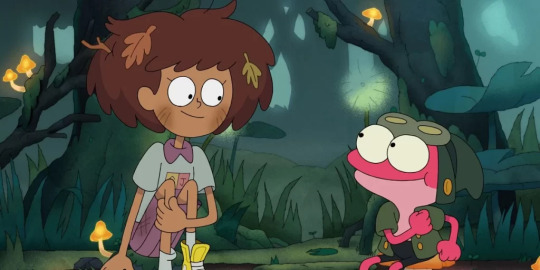
What if a Thai-American girl wakes up and finds herself in a world filled with talking frogs? Amphibia answers that question. Anne meets new friends, enemies, and tries to figure out her purpose in this strange world.
Reprinted from The Geekiary, my History Hermann WordPress blog (it will be published on there on Dec. 26), and Wayback Machine. This was the forty-second article I wrote for The Geekiary. This post was originally published on June 25, 2022.
Amphibia is an animated adventure-fantasy-comedy series by Matt Braly, an animator of Thai descent. He is also known for directing episodes of Gravity Falls and Big City Greens.
As a warning, this recommendation discusses spoilers for all three seasons of Amphibia.
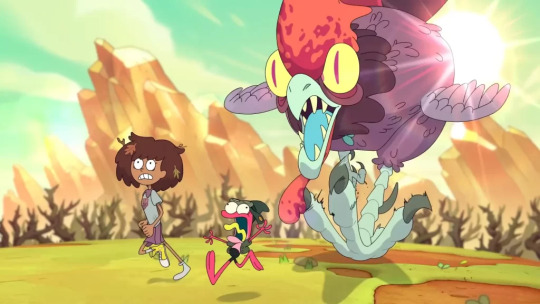
Amphibia centers around a 13-year-old Thai-American girl, Anne Boonchuy (Brenda Song), who is transported by a music box to another world with her two best friends, Sasha Waybright (Anna Akana) and Marcy Wu (Haley Tju). In this wild land, filled with marshes and tropical environments, she meets talking frogs and other creatures, including a family of frogs named the Plantars.
This family is headed by the overbearing and traditional grandfather, Hop Pop (Bill Farmer). He has two kids-of-sorts: an excitable frog named Sprig (Justin Felbinger) and a spunky pollywog named Polly (Amanda Leighton). All of them live on a farm of their own in the close-knit town of Wartwood. As Anne bonds with the Plantars, she learns what friendship and being heroic means.
This all-ages animated series is filled with diversity, especially from its characters and voice actors. The latter are of Chinese, Indonesian, Pakistani, Japanese, and Thai descent. The show compliments this with wonderful animation, music, and background art.
Unsurprisingly, the series has been been nominated for four Annie Awards, one Daytime Emmy, and a GLAAD Media Award since it began airing in 2019. It includes some voice actors I'm familiar with, like Tress MacNeille and John DiMaggio, who voice characters in Disenchantment, as well as well-known gay actor George Takei.

From left to right: Sasha, Marcy, and Anne with "cool anime" powers in the final episode of Amphibia, floating the air like anime heroes or Kid Cosmic protagonists
Amphibia is more than a series centered on a girl who is adopted by a family of talking frogs. While there is the classic conflict of good vs. evil, there is also a focus on family separation, self-acceptance, and trauma. As I wrote previously, all of the main protagonists have trauma on same level or another, as the friendship between all three of them faces hardships and strains.
This is all mixed together with fantasy and sci-fi elements, and even occasionally situational comedy acts. These complex characters are written in such a way that you become invested and concerned about them, even after ending the series. The series also has plotlines focused on human and animal experimentation, and robots.
This series is part of a recent set of diverse Disney animated series. Others include The Ghost and Molly McGee, a supernatural fantasy, and will-be-ending horror comedy and fantasy The Owl House. Upcoming series such as Iwaju, Moana: The Series, Tiana, Cookies & Milk, Hailey's On It!, and Marvel's Moon Girl and Devil Dinosaur portend a continuation of this focus.
In the case of Amphibia, Braly based the series on his trips to Bangkok, Thailand where he thought he was an outsider. He also was inspired by video games like The Legend of Zelda and Chrono Trigger. In previous interviews he said he wanted to make the main character a Thai-American because there were few Thai protagonists in TV series or films that he watched as a kid. As a result, he has said he become influenced by the Mortal Kombat and Sonic the Hedgehog franchises.
In a December 2021 interview, Braly noted the themes of immigration, alienation, and xenophobia drawn from his own experiences. All of these themes are deeply integrated into the series. Some of this is heavily informed, according to Braly, by the 1990s series, Pepper Ann. Braly also noted that frogs were chosen for the series because they are metaphor for change and their connection to Thai culture.
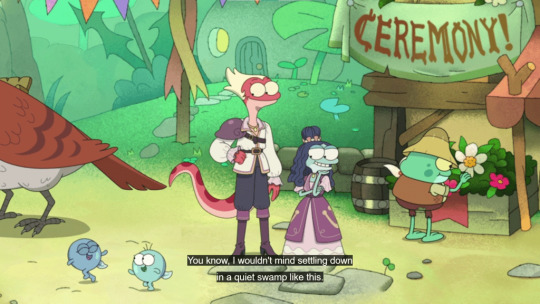
Lady Olivia (right) looks at General Yunan (left) lovingly and tells her she wouldn't mind "settling down" in Wartwood with Yunan.
Amphibia is rightly praised for illustrating issues like emotional manipulation, bullying, and delightful characters. The series could also be praised for broadening "ethnic-racial representations" like Craig of the Creek and Elena of Avalor. This is something that groups like the socially conservative family-oriented non-profit, Common Sense Media, would praise.
A 2021 report from the organization notes that when people of color are portrayed stereotypically, it causes harmful views to be promoted among White audiences. This is coupled with underrepresentation of specific groups, such as Latine and Indigenous people, and misrepresentation of others.
Little mentioned is LGBTQ representation in Amphibia. Although it isn't as direct as other recent series, like Dead End: Paranormal Park or The Owl House, Braly stated that in the show's finale, they left it open as to whether someone thinks of Sasha, Marcy, and Anne romantically or not, as he loves shipping. He called it the "greatest expression of love for characters."
This gives queer fans who ship Marcanne (Marcy and Anne), Sasharcy (Sasha and Marcy), Sashanne (Sasha and Anne), or even all three in a relationship together some solace. This the case even if this so-called "Calamity Trio" are only be "gal pals" in the show's canon.
Even so, Sasha was hinted as bisexual in the show's final episode, and confirmed as such by Braly, as I noted in an earlier post. Her voice actress, Akana, is bisexual herself. She voiced Daisy in magical girl esque Magical Friendship Girl Squad: Origins and Magical Girl Friendship Squad. In the case of Daisy, Akana argued that Daisy was bisexual. However, other crew members argued she was a lesbian, and possibly trans, leading to confusion among fans.
Coming back to Amphibia, Sasha joins other LGBTQ characters such as Frodrick Toadstool and Toadie who were confirmed as a gay couple by the show's creator. More significantly is Yunan (Zahra Fazal) and Lady Olivia (Michelle Dockery) as lesbian couple. There's also Ally and Jess who run an Internet video channel together. Their colors are based off the bisexual and pansexual flags.
It is also implied that Mr. X, voiced by RuPaul, is gay, and there are some other minor LGBTQ characters. Similar to Sasha, the sexual identities of these characters are never directly stated. Mr. X is an effeminate FBI agent assisted by a silent assistant named Jenny. After Anne and frog family escape to Amphibia, Anne's birth family convince Mr. X to hear them out and to be on the same side against Andrias. This results in the military and FBI assisting Anne and her friends in the final episode.
The relationship of Yunan and Olivia, was embraced by reviewers like Jade King, who calls herself "TheGamer’s Queen of Gay Cartoons." Braly told King that the ship of these two characters was their favorite ship. He called it "very organic" and "awesome." Fans were jubilant about the news, and fully embraced it. It undoubtedly helped that Fazal was inspired by the protagonist of Darkwing Duck in voicing the character.
Considering that the final episode has a ten year time-skip, it makes the series ripe for a possible spin-off or continuation that happens in that time skip, with different protagonists than this series. While some are conflicted about a spin-off, the show could go a route a la Steven Universe Future, focusing on the aftermath of a victory, with Anne, Marcy, and Sasha having to pick up the pieces.
All three seasons of Amphibia are currently streaming on Disney+, YouTube TV, and Prime Video.
© 2022-2023 Burkely Hermann. All rights reserved.
#amphibia#chosen family#self acceptance#anne boonchuy#matt braly#lgbtq#sasha waybright#marcy wu#kid cosmic#thai culture#thai creator#disney plus#bisexuals#lesbians#craig of the creek#elena of avalor
38 notes
·
View notes